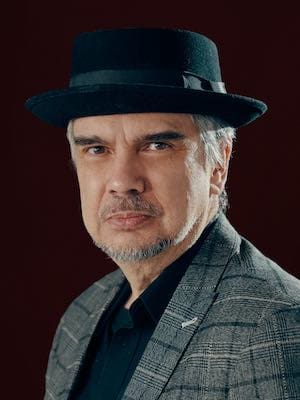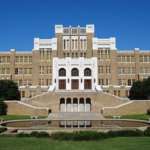One of the greatest accomplishments of the Civil Rights Movement focused on a desegregated education. Until the 1950s, racial segregation in public schools was the norm throughout the United States.
In Topeka, Kan., a black third‑grader named Linda Brown had to walk one mile to get to her black elementary school, even though a white elementary school was only seven blocks away. When her father attempted to register his daughter at the white school, the principal refused to admit little Linda.
The U.S. District Court for Kansas heard Brown’s case June 25‑26, 1951. The school argued that because segregation in Topeka and elsewhere pervaded many other aspects of life within the United States, segregated schools simply prepared “colored” children for life in America.
Losing the case in the district court, it was appealed to the Supreme Court, which did not rule until 1954. That ruling is today known as the Brown v. Board of Education. The court did not abolish segregation in all public areas, nor did it place a time table as to when schools needed to desegregate, but it did declare segregation to be unconstitutional.
Despite the decision, most public schools simply ignored the ruling and continued racial segregation. It would take until 1957, and the dispatching of federal troops to Little Rock’s Central High School, to provide a few black students access to a white school. Through the ’60s and ’70s, a battle raged throughout our nation’s public school systems, which fought tooth and nail against the will of the Supreme Court.
Ever wonder what role most churches played during these tremulous times? Did the Christian churches–who preached that the saving grace of God is for all people regardless of their race or ethnicity–stand tall as the beacon of moral guidance for a nation gripped in racism?
I’m afraid not. Some of the churches responded to the moral crises of segregation by establishing so-called Christian schools. White members could once more send their white children to a school where they would not be forced to sit next to black or brown children.
Many Christian schools established in this nation during these times, were founded for the sole purpose of providing a loophole to the Supreme Court’s mandate of desegregation. How deplorable to use the guise of a so-called Christian education to maintain such a sinful social structure.
This is not to say that all that were founded during these times today continue to support the “original” sin of racism. Some schools found redemption by moving beyond their racist beginnings by operating learning institutions which reflect the rich diversity of our nation and our faith. Such examples should be a source of pride for the entire community.
Yet unfortunately, there are still many “Christian” schools with a faculty, administration and student body that is predominately white (with the exception of non-white children adopted by white parents). How sad to see the consequences of that “original” sin still being manifested in the new millennium.
While no responsible white person today would openly advocate segregation, we have all heard parents say things like: “There are too many Latinos in this school, so I’m placing my daughter in a Christian school next year.” Or, “My son was in a fight with a black boy. I’m pulling him out of public school and putting him in a Christian school.”
Well I, for one, would never send my precious children to a school–no matter how much it proclaims the Christian faith–that refuses to celebrate and/or learn from our ethnicity. I truly pity those students who are denied a full education, because they are forced to go to a school where everyone looks like them.
Any educational system devoid of diversity incapacitates the ability of its student body to function or succeed in the new global marketplace. Like it or not, this new world order means that our present generation will have to deal with, purchase from, sell to, negotiate with, work for, supervise over and profit alongside people from different races, cultures and ethnicities.
As you come across schools which proclaim to provide a Christian education, I suggest you ask two simple questions: Does the faculty, staff, and student body proportionately reflect the community’s diversity?
And if not, why? Maybe not much has changed for some “Christians” since the days of segregation.
What about our public schools? Their record on desegregation is just as bad. Unfortunately, the public schools, which at one time were at the forefront on desegregating our nation, have in recent years reversed this trend.
According to the Harvard Civil Rights Project, the proportion of blacks and Hispanics in white-majority schools has significantly dropped between 1988 through 2002, making them more isolated from their white counterparts than in the early ’70s before the Civil Rights Movement initiatives began.
The termination of dozens of court-ordered desegregation plans (specifically bussing), along with an increase of students of color within the overall population, continuing white flight from urban centers and housing redlining, have all contributed to the resegregation of the nation’s schools.
Whites, who represent 61 percent of the population, are the most segregated group. They attend schools where 80 percent of their classmates are white.
But this is as much a class issue as a race issue, linking segregation by race with segregation by poverty. Black and Latino/as attend schools where about 45 percent of the students are poor, compared to 19 percent for whites.
Nonetheless, Justice Anthony Kennedy best articulated the new approach to education in a seminal opinion concerning a Georgia school district. He wrote: “Racial balance is not to be achieved for its own sake. … Where resegregation is a product not of state action but of private choices, it does not have constitutional implications.”
From Missouri to Oklahoma, similar court decisions are reversing Brown v. Board of Education, so that once integrated schools are again becoming segregated.
Miguel A. De La Torre is director of the Justice & Peace Institute and associate professor of social ethics at Iliff School of Theology in Denver.
Click here to order Miguel De La Torre’s Doing Christian Ethics From the Margins from Amazon.com.
Professor of Social Ethics and Latinx Studies at Iliff School of Theology in Denver, Colorado, and a contributing correspondent at Good Faith Media.




